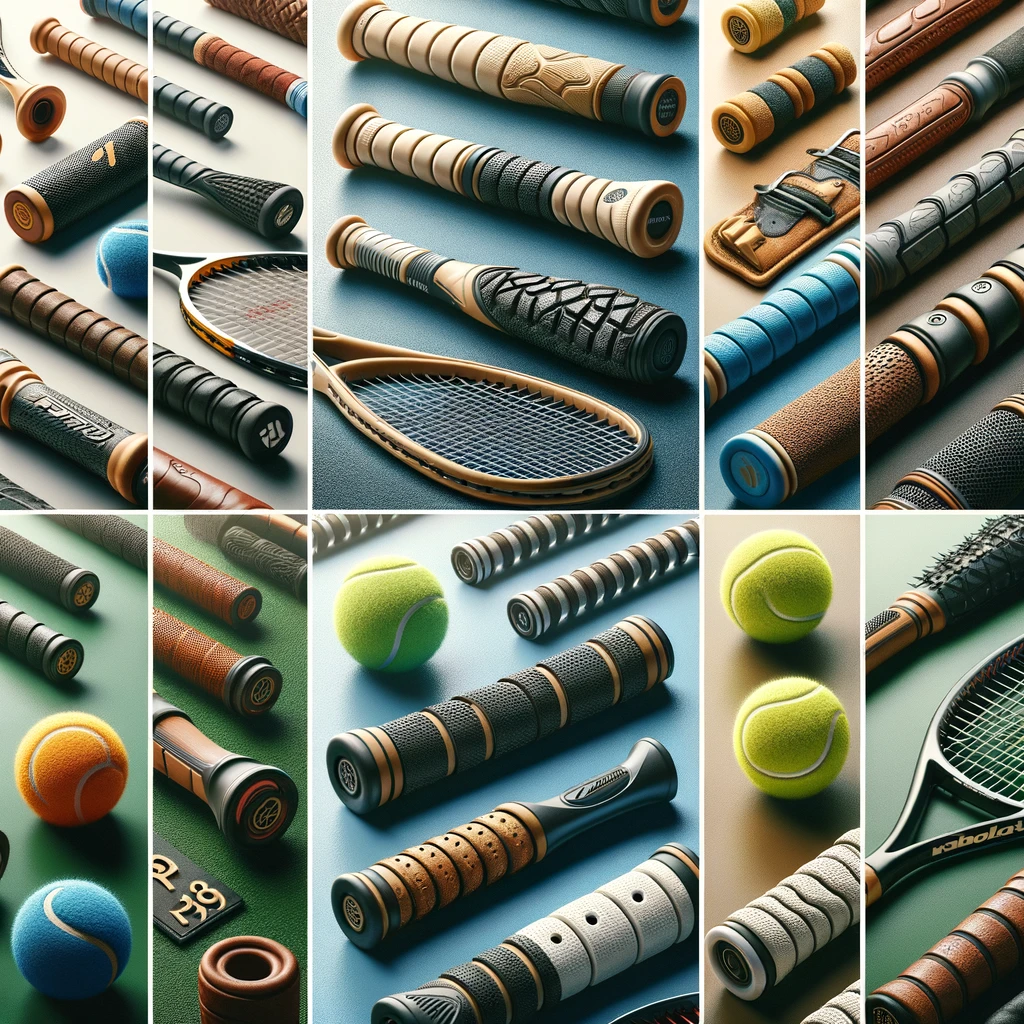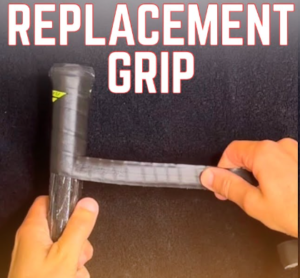In the world of junior tennis, every element of the game demands careful consideration, and this includes the often-overlooked aspect of tennis racquet grips. For young players, the choice of grip and its maintenance can significantly influence their performance and enjoyment of the game. Let’s dive into why grips are essential for junior players and delve into the intricacies of selecting and replacing them.
Understanding the Significance of Tennis Grips
What is a Tennis Grip?
A tennis grip is the layer of material wrapped around the handle of a tennis racquet. Its primary functions include providing a comfortable hold, enhancing the player’s control over the racquet, absorbing sweat, and reducing the shock transmitted during ball impact.
Types of Grips
- Original Grip: The factory-applied grip on a new racquet, which may not always meet individual preferences in terms of feel and absorption.
- Overgrip: A thin layer that goes over the original grip, offering easy customization in terms of tackiness and absorption.
- Replacement Grip: This is our focus. It replaces the original grip when it wears out and is thicker than an overgrip, forming the primary layer directly on the racquet’s handle.
Replacement Grips
Basic Layer: Replacement grips are the primary grip that comes attached to a new tennis racket. They are usually thicker and provide the foundational layer of cushioning and comfort.
Cushioning and Shock Absorption: These grips are designed to offer a good level of shock absorption, which is essential for young players who are still developing their strength and technique.
Durability: Replacement grips are more durable than overgrips and are meant to last longer. They don’t need to be changed as frequently.
Installation: Replacing them can be more challenging than applying an overgrip. It often requires completely removing the old grip and applying a new one, which might be better done by a professional or experienced player.
Overgrips
Additional Layer: Overgrips are thin layers wrapped over the replacement grip. They are not meant to be used alone but as an addition to the existing grip.
Enhanced Feel and Control: Overgrips can enhance the feel of the racket in a player’s hand. They can offer extra tackiness or absorbency, depending on the player’s preference and playing conditions.
Customization: They come in various thicknesses, textures, and colors, allowing junior players to customize their racket’s handle to their liking.
Easy to Replace: Overgrips are easier to apply and change than replacement grips. This makes them convenient for players who want to adjust the grip based on weather conditions or simply replace a worn-out layer.
Suitable for Frequent Changes: Since junior players might play often and in different conditions, overgrips are a cost-effective way to maintain a fresh and clean grip.
Choosing for Junior Players
- Skill Level and Preference: For beginners, a good replacement grip with an overgrip for added comfort and sweat absorption might be ideal. Advanced junior players might prefer specific types of overgrips for better control and feel.
- Playing Frequency and Conditions: If a child plays frequently or in hot, humid conditions, overgrips are beneficial as they can be easily replaced when they wear out or get dirty.
- Comfort and Injury Prevention: Proper grip setup can also help prevent blisters and injuries, which is especially important for younger players.
In summary, both replacement grips and overgrips play important roles in junior tennis. The choice between them depends on the player’s level, frequency of play, and personal preference. It’s often beneficial to use both – a solid replacement grip for foundational support and comfort, and an overgrip for customization, feel, and easy maintenance.
How to Replace a Tennis Grip
Replacing a tennis grip is a skill that can be easily learned and mastered. Here’s a step-by-step guide:
Remove the Old Grip: Carefully unwind the old grip from the racquet handle. If there’s adhesive residue, clean it off.
Start with the New Grip: Replacement grips usually have a tapered end with an adhesive strip. Peel off the covering of the adhesive strip, and align this end at the bottom of the handle at a slight angle.
Wrapping the Grip: Hold the racquet with one hand and the grip with the other. Start wrapping the grip around the handle, slightly overlapping each layer as you go up. The angle at which you wrap will determine how much overlap there is – more overlap provides a thicker feel.
Finishing the Wrap: Once you reach the top of the handle, cut the grip (if it doesn’t come pre-cut) so it ends cleanly around the handle’s top. Secure this end with the provided adhesive tape.
Final Touches: Some players add an overgrip for additional comfort, absorption, or tackiness. This is wrapped over the replacement grip in a similar manner.
How to Rewrap Overgrip
Rewrapping an overgrip on a tennis racket is a straightforward process that can make a significant difference in your play. Here’s a step-by-step guide to help you or your junior tennis players rewrap an overgrip:
Remove the Old Overgrip: Unwrap and remove the old overgrip from the racket handle. If it’s adhered to the base grip, peel it off carefully.
Prepare the New Overgrip: Unroll the new overgrip and find the tapered end, which often has a small piece of adhesive tape on it.
Starting the Wrap:
- Place the tapered end of the overgrip on the butt cap (the very bottom) of the racket handle. The adhesive part should help it stick.
- Start wrapping the overgrip around the handle, making sure the first wrap completely covers the butt cap.
Wrapping Technique:
- Hold the end of the grip in place with your thumb and slowly start winding the grip around the handle.
- Each new wrap should slightly overlap the previous one, about 1/8 to 1/4 of an inch. This ensures a smooth and even layer.
Maintain Tension: Keep the overgrip taut as you wrap. This helps prevent wrinkles and ensures a snug fit around the handle.
Angle of Wrap: The angle of wrap depends on the size of your handle and your personal preference. A steeper angle will result in a thicker wrap, while a shallow angle will cover more of the handle length.
Finishing Up:
- Once you reach the top of the handle, you might have excess grip. Use scissors to cut the overgrip, leaving enough length to finish wrapping the handle.
- Wrap the end of the grip around the top of the handle and secure it with the finishing tape provided.
Check and Adjust: After you’ve finished, hold the racket to ensure the grip feels comfortable. If there are any loose or uneven areas, unwrap and rewrap as necessary.
Conclusion
For junior tennis players, the correct replacement grip is a small but critical component of their equipment. It offers comfort, enhances performance, and helps prevent injuries. Regularly assessing and changing the grip can lead to noticeable improvements in a young player’s game. Encourage junior players to learn and participate in the process of selecting and replacing their grips, as it fosters a deeper connection and understanding of their equipment and its role in their tennis journey.



